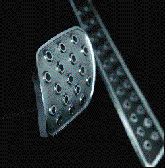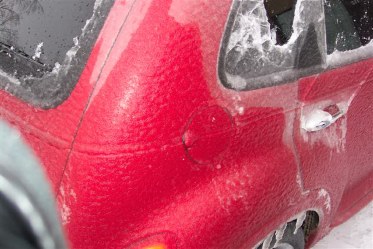CarTest! Expert car reviews and advice | home
CarTest! Expert car reviews and advice | CarTest Contents | New Car Reviews | Used Car Reviews | What is your car worth? | Automotive NewsBriefs | Award-Winning Models | Find the Best Vehicle | Automotive Advice | Save on Gas | Driving Tips & Maintenance Advice | Safety Research & Insurance Tips | Tire Advice | Road Trips | Auto Racing | Classics & Collectibles | Newsletter | About Us | SEARCH CarTest!

©CarTest.ca. All rights reserved.
Tips to prepare your vehicle for cold-weather driving
 Whether your winter days and nights are spent hustling and bustling around town, or heading over the river and through the woods, chances are that some part of your day involves driving. Frigid temperatures and poor road conditions can take a toll on any driver, but it's important to remember that such conditions can, and will, take a toll on your vehicle, too.
Whether your winter days and nights are spent hustling and bustling around town, or heading over the river and through the woods, chances are that some part of your day involves driving. Frigid temperatures and poor road conditions can take a toll on any driver, but it's important to remember that such conditions can, and will, take a toll on your vehicle, too. “As temperatures continue to drop, there are a few things that you should do to ensure that your vehicle is winter weather ready,” said Mark Salem, ASE Certified Master Technician and host of “Under the Hood,” a radio car-care show in Phoenix, Ariz.
Salem advises that drivers do the following things to ensure that their vehicle is prepared for the winter weather:
- Crank up the heat: Don't wait until snow is on the ground or frost is on your windshield to test out your heater and defroster. “Exercise all the heater and defrost settings before winter weather strikes to make sure that they are working properly and address any problems immediately,” said Salem. “The comfort of you and your passengers depends on it.”
- Check your oil: During winter, you need an oil that can handle low temperatures and quickly flow to critical engine parts on those cold mornings. According to Salem, a fully synthetic oil is ideal for the winter months. Such oils are "designed to flow well even in lower temperatures,” said Salem.
- Test your tires: “Your tire pressure will go down as the weather cools, so make sure your tires are inflated properly,” said Salem. “Too little pressure will increase wear and increase your fuel consumption; too much pressure can reduce traction, especially in icy conditions.” The proper air pressure listings are often found on the side of the driver's door, or in the owner's manual. Salem recommends making sure you also inspect your treads and replace any tires that look worn.
- Stock the trunk: It's always smart to be prepared, so keep a few useful items in the trunk. “I'd recommend including a small shovel to help dig out of snow; an ice scraper to clear windows, headlights and taillights of snow and ice; and a bag of sand to add weight and improve traction while driving in winter weather,” said Salem. “It's also a good idea to keep a set of jumper cables in your car to help get you back on the road if your battery dies.” Finally, throw an extra blanket, hat, gloves, a few litres of drinking water (leave room for expansion in case it freezes and expands), and some high energy snacks in the trunk, just in case.
- Allow extra time at start-up: Let your vehicle warm up before hitting the highway. “Allowing the engine to idle for a few seconds before driving off will ensure proper oil flow and lubrication,” said Salem. “That said, don't allow the engine to idle for a prolonged period after start-up in cold weather. This doesn't do anything to warm drive-train components, and wastes fuel.”
After starting your car and allowing it to idle for a short time, just drive easily for several miles to ensure proper vehicle warm-up. Salem recommends keeping this simple rule of thumb in mind: if your car is a 1990 model or older, allow it to idle no longer than 3 to 4 minutes. For newer vehicles, a minute or two is all you need.
“Don't forget to make time for your vehicle this winter,” said Salem. “Proper maintenance and preparation will help ensure that you and your passengers don't get caught out in the cold.”
For more information on vehicle maintenance, visit www.mobiloil.com. Posted Jan. 4, 2007. © CarTest.ca.
Search CarTest!

Custom Search